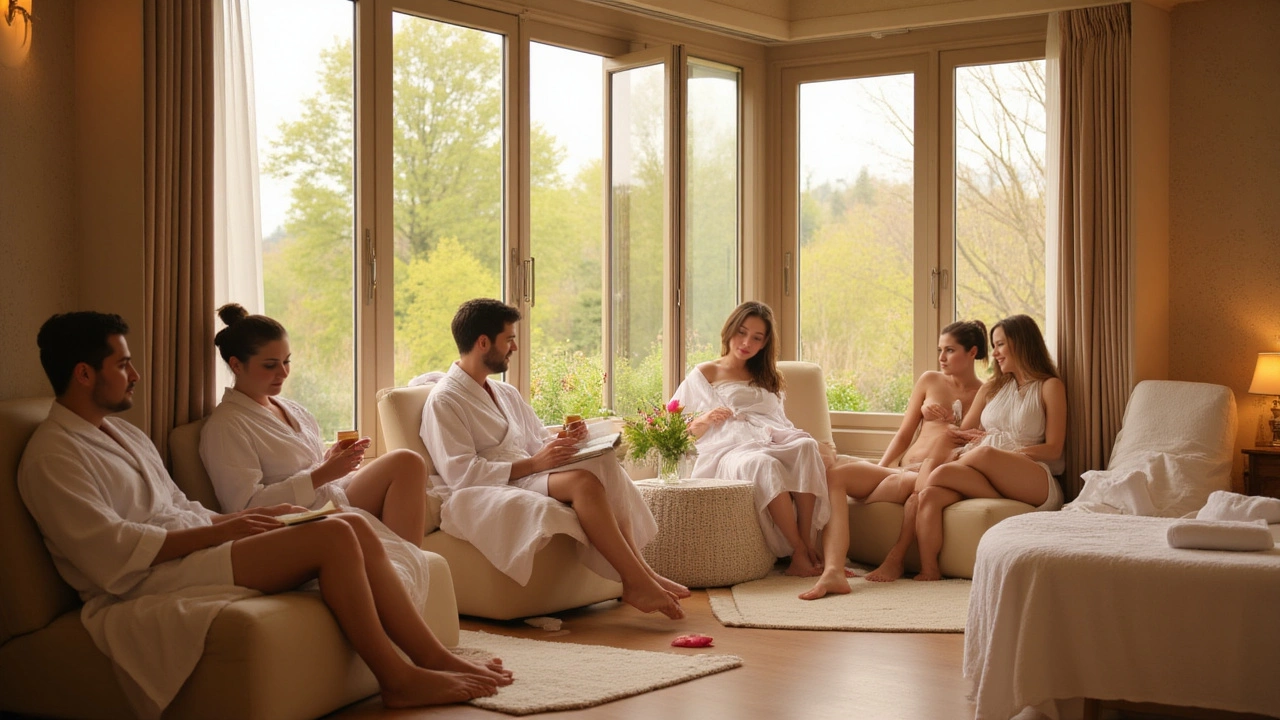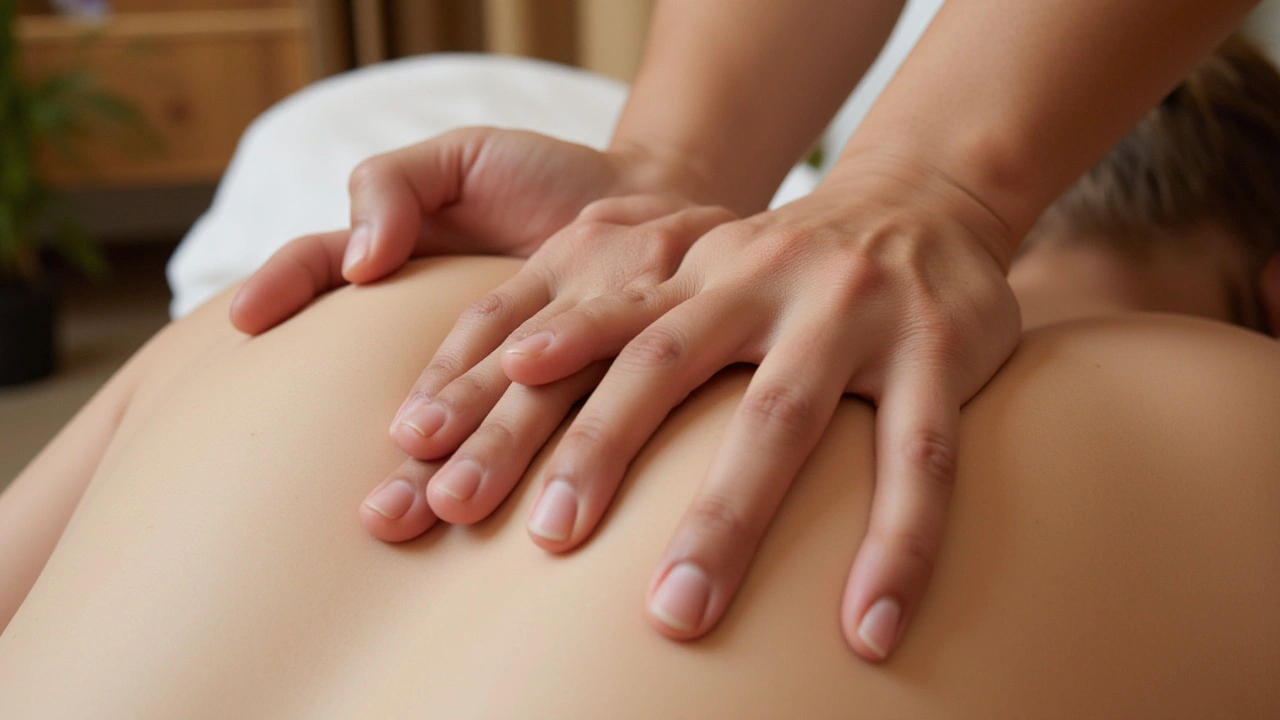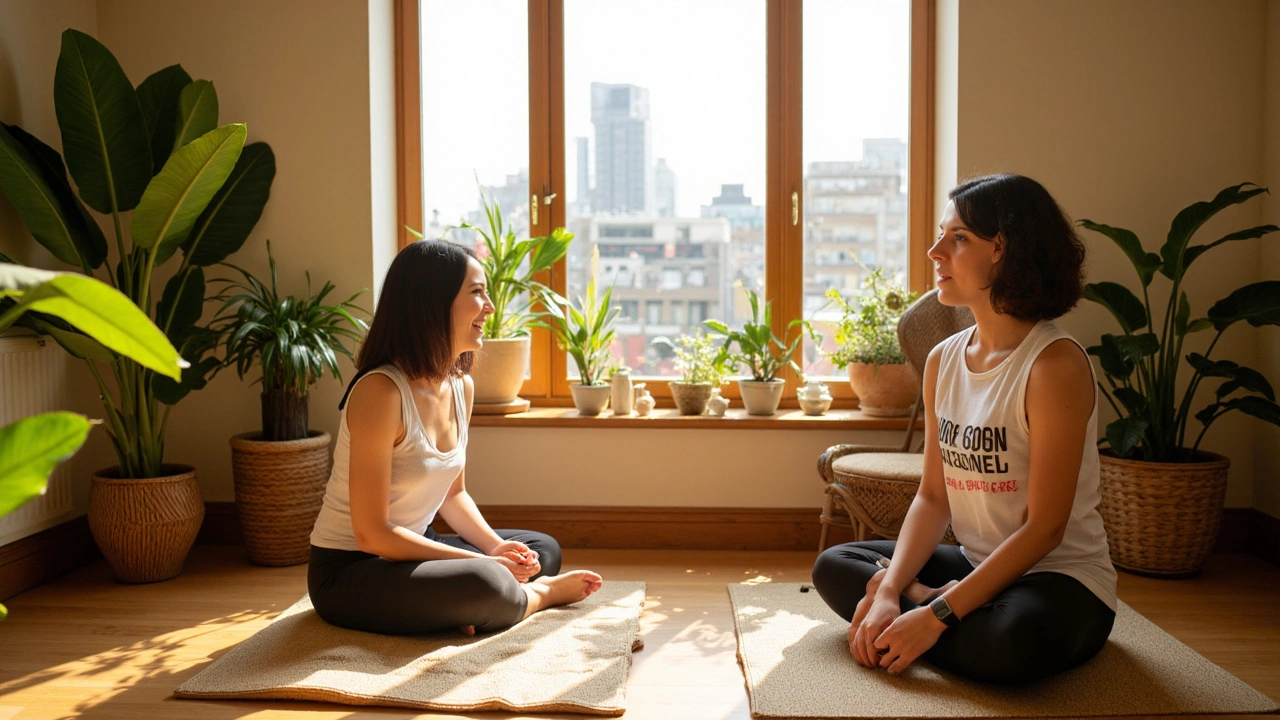Ultimate Guide to Full Body Massage Techniques: Find the Best Type for Your Needs

If you’re eyeballing a massage menu these days, it’s easy to feel totally lost. So many fancy names, wild promises, and styles that sound like menu items at a high-end restaurant. Maybe you’re hoping to melt away some stress. Or get rid of that tight spot in your back that’s been nagging you for months. Either way, not all massages are created equally. Some are gentle with soft music and calming oil, others can make you grunt or even yelp—but walk away feeling ten times lighter. I used to think a full body massage was just a series of back rubs until my son Ivor innocently started pointing out pressure points—after learning about the muscles in school. Truth is, there’s a huge difference between lounging through a Swedish treatment and having a therapist dig deep during a sports massage. Let’s cut through the mystery, skip the fancy jargon, and break down the techniques that actually matter for real people with real bodies.
What Exactly Is a Full Body Massage?
Let’s get this out of the way: a full body massage isn’t code for something sketchy. It’s a structured session where a massage therapist works all the major muscle groups—head and neck, shoulders, back, arms, hands, legs, and feet. The goal is straightforward: maximize relaxation, ease tension, and sometimes target specific aches. Most sessions run about an hour (closer to ninety minutes if you want the works). Therapists usually use oil or lotion to cut down on friction and keep things glide-y. No, you don’t have to take off all your clothes—usually you keep your underwear or shorts on, and you’re covered in a sheet for modesty.
The magic of a full body massage comes down to how every single muscle connects. Ever had a sore jaw turn into a headache? Or tight calves crank up your lower back pain? Your body’s one big chain. During a session, a therapist follows that logic, moving from top to bottom (or vice versa), gently addressing knots and stimulating circulation all the way. Research published in 2023 by the American Massage Therapy Association (AMTA) showed that 77% of clients experienced substantial improvements in sleep, flexibility, and chronic pain management after just a few regular sessions.
Of course, the atmosphere helps, too. Dimming the lights, playing soft music, and that lovely faint smell of lavender oil—it’s not just spa fluff. Studies show that our senses respond to these cues, making it easier for your body to let go of tension. A 2024 survey revealed that the most popular add-ons are warm stones, aromatherapy scents, and heated tables, each making the experience more immersive. So, a full body massage isn’t just for people “who like being pampered”—it’s a form of self-care used by athletes, desk workers, busy parents, and anyone who wants to feel a little more human again.
Typical sessions mix several techniques depending on your goal. The therapist might start with long, soothing strokes across your back, add some kneading to stubborn spots, and finish with gentle pressure on your scalp and feet. By the end, you know every part of you has gotten some attention. Unlike quick chair massages you get at the airport, this is a head-to-toe reset. And because everyone’s needs are a bit different, there’s really no one-size-fits-all. That’s where understanding the main techniques comes in handy.
The Top Full Body Massage Techniques Explained
Every now and then, I’ll hear friends debate whether deep tissue is “better” than Swedish, or if shiatsu is mysterious mumbo-jumbo. Honestly, there are a handful of classic techniques—and each has its fans for good reason. Here’s a clear run-down, no fancy pamphlets required:
- Swedish Massage: This is the OG, the one most people picture—long, fluid strokes, gentle kneading, rolling movements, and sometimes even tap-tap percussion with the edge of the hand. Super popular in North America and Europe. It’s perfect if you want to relax, improve mood, or gently loosen up after weeks of working at a desk. Fun fact: The technique dates back to early 19th century Sweden and was standardized by Per Henrik Ling, a fencing instructor who believed movement was medicine. Most folks say it’s deeply relaxing and can even boost immune function, according to a 2024 Healthline review.
- Deep Tissue Massage: This isn’t just “harder” Swedish. It targets the deepest muscle layers, fascia (the web of connective tissue), and knots that just won’t budge. Therapists use their elbows, knuckles, and even forearms—sometimes it borders on uncomfortable, but the payoff is relief for chronic tension and injuries. It’s a hit with athletes and anyone who works on their feet or sits hunched over. On average, people report improved range of motion and reduced pain intensity after just a couple of deep sessions (Johns Hopkins, 2023).
- Sports Massage: Even if you’re not a pro athlete, you could benefit. Sports massage blends Swedish with deep tissue, stretching, and targeted focus on muscle groups used in specific sports. Therapists often customize these sessions based on training schedules—some techniques prevent injury, others help muscles recover after exercise. Especially great for runners, cyclists, or weekend warriors who want to stay limber.
- Shiatsu: This Japanese technique uses finger pressure on acupressure points, following energy pathways (called “meridians”). It’s usually done fully clothed, no oils needed, and sessions often focus on balancing both physical and emotional tension. A 2023 Japanese Health Journal report found regular shiatsu helped reduce anxiety and boost sleep quality among office workers.
- Thai Massage: Sometimes called “lazy yoga,” Thai massage happens fully clothed, usually on a mat. The therapist stretches, compresses, and moves your limbs into different postures. People love it for its energizing effect and deep muscle relief. Boss move: The therapist actually uses their body weight and sometimes walks on your back.
If you’re still unsure, talk to your therapist. They’re trained to spot what your body needs just by feeling your muscle tension and range of motion. Some therapists even blend techniques for a more customized session. The real key is explaining what you actually want—whether it’s simple relaxation, help with an old shoulder injury, or just a break from wrangling kids all day.

Finding the Right Massage Technique for You
The quest for the perfect massage is personal. What melts tension for me might not do a thing for you (my wife prefers Shiatsu; after dealing with Ivor’s trampoline antics, I lean into deep tissue). With so many options, it’s smart to think about what you’re hoping to fix. Here’s a general primer:
- If you’re stressed or dealing with anxiety: Swedish massage is a safe bet. The gentle strokes and rhythmic flow have been shown to trigger the parasympathetic nervous system, dropping your heart rate and lowering cortisol. Ivor even caught me snoozing twice during one session.
- Chronic pain or muscle stiffness? Deep tissue or sports massage should be on your radar. They tackle those gnarly knots and leave you with lasting relief—backs, shoulders, glutes, and calves get special attention. Just let your therapist know how much pressure you can handle.
- Trying to boost flexibility or want something interactive? Thai massage is both a workout and a stretch. It’s popular among yoga types and people who like to feel limber.
- Prefer keeping your clothes on or feel shy about oils? Shiatsu is worth a shot. Sessions are fully clothed and focus on restoring balance via acupressure. This can be surprisingly refreshing when you don’t want to deal with changing clothes or sticky oils.
Age, activity level, and health conditions also factor in. Elderly clients might prefer gentle techniques, while someone dealing with sports injuries might need targeted, high-pressure therapy. It’s not just about the technique but the pace, environment, and even the personality of your therapist. Some people love silence, others want to chat. Mention preferences up front—good therapists customize sessions for you.
| Massage Type | Pressure Level | Best For | Typical Duration |
|---|---|---|---|
| Swedish | Light to Medium | Relaxation, Stress Relief | 60-90 mins |
| Deep Tissue | Firm | Chronic Pain, Trigger Points | 60-90 mins |
| Sports | Variable | Injuries, Athletes | 60 mins |
| Shiatsu | Variable | Anxiety, Energy Balance | 60 mins |
| Thai | Stretch & Compression | Flexibility, Energy | 60-120 mins |
Got allergies or super-sensitive skin? Mention that before your session. Lots of places now offer hypoallergenic, fragrance-free oils. If you’ve got any medical conditions like diabetes, high blood pressure, or are pregnant, talk to both your doctor and your therapist first—some massages aren’t recommended depending on your health situation. Don’t hold back or try to “tough it out” if the pressure gets uncomfortable; therapists want feedback and will gladly adjust.
Benefits and Science Behind Full Body Massage
Even though it sometimes feels like a guilty pleasure, full body massage has serious science on its side. The sense of calm you get isn’t just in your head—massage has been shown to lower levels of the stress hormone cortisol, bump up those good mood endorphins, and even help with stuff like migraine frequency, according to a University of Miami study from 2023. Here’s where things get interesting: regular massage can help with sleep problems, speed up muscle recovery, improve immune function, and even help kids with anxiety. When Ivor had his first sports injury last year, massage sped up his recovery noticeably. Our family soon became believers.
Massage stimulates blood flow, delivering more oxygen and nutrients to tissues and muscles. That’s why you often feel warm and invigorated after a session. Plus, it helps flush out lactic acid and metabolic waste, which builds up during exercise or from sitting too long. Blood pressure tends to drop and muscles let go of that stubborn tension. A 2024 study showed weekly massages can decrease blood pressure by up to 10% after six weeks.
There’s something called the “therapeutic touch” effect—literally, being touched in a safe, skilled way can help with loneliness and boost oxytocin, known as the bonding hormone. This is especially true for people who spend a lot of time alone or glued to a screen. Massage also increases flexibility by breaking up scar tissue and adhesions (those sticky spots between muscle and fascia). You move better, and you’re less likely to get injured.
This science pops up in surprising places. Even children with autism or ADHD have been shown to benefit from gentle, regular massage, with parents reporting better sleep and calmer moods. In the workplace, businesses offering chair massages saw a 25% boost in employee satisfaction (AMTA Workplace Wellness Report, 2024). If you’re ever skeptical about massaging away real problems—like sports injuries or chronic pain—look to the rehab world. Orthopedic clinics and physical therapists now include professional massage as a core part of treatment.
Sports teams? They swear by it. The 2024 Olympic cycling team made Swedish and deep tissue a top part of their regimen, and most NBA teams have massage therapists on staff. This isn’t just about relaxing after a game—it’s full-on health maintenance. Aging adults, too, benefit by staying more mobile and independent as muscle stiffness fades. And honestly, even if you never run a marathon or compete on TV, your regular tension—whether from running after kids or working from home—melts just the same.

How to Get the Most From Your Full Body Massage
By the time you’re face-down in that cozy cradle, you want to soak up every blissful second. How do you get more value out of your session? Start with prepping your body: drink a bit more water than usual, skip the heavy meal, and arrive early. This lets you start to relax before hands touch your skin. If you’ve got specific pain or sensitive areas, mention them. Maybe you’ve pulled your shoulder moving furniture or your neck is tense after too many late-night Netflix marathons—don’t be shy about saying so.
- Breathe easy: Deep breathing during the session boosts relaxation and helps your muscles unclench. If you ever find yourself tensing up, exhale and let go. Your therapist will work with your breathing rhythm.
- Pay attention to pain: Massages shouldn’t hurt. “No pain, no gain” doesn’t apply here. Let your therapist know if something feels too much. Most professionals will check in throughout.
- Don’t rush afterwards: Give yourself time to reorient. Standing up too fast can make you dizzy, and some folks get super sleepy post-session. Hydrate well—your body’s flushed toxins and repairing tissues.
- Book regular sessions if possible: Full results start to show with repetition, even if it’s just once a month. Many people say the stress relief and improved mobility build with every visit.
- Try new techniques: Don’t be afraid to mix things up. If deep tissue is your go-to, throw in a Thai or Shiatsu session just for the change. Your body adapts, and new styles might surprise you.
- Talk before and after: Good therapists want feedback and probably love hearing funny stories about trampoline accidents (trust me), so keep things conversational if you want a more tailored experience.
The world of full body massage techniques is big, diverse, and—if you’re open to it—life changing. Whether you crave deep relaxation or want to fine-tune your body for sport or daily chaos, there’s a perfect style out there for you. Just remember, good communication with your therapist and a willingness to try new things help you get the most from every session. If all else fails, a classic Swedish massage still works wonders—my secret weapon whenever parenthood throws me for a loop.



